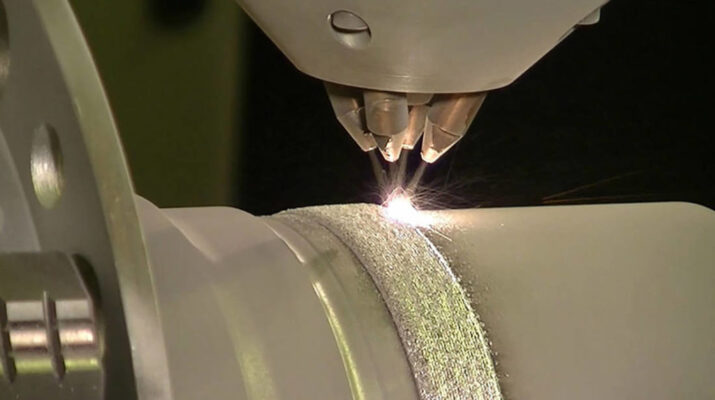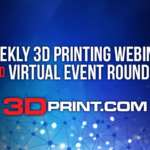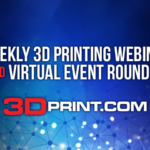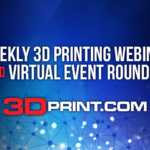
 With so many different types of manufacturing methods available, it’s difficult sometimes to know how to choose the one that is best for your needs. Rapid prototyping offers numerous benefits, but there are a wide range of rapid prototyping methods to choose from, each offering something a little different, and it can be overwhelming trying to sort through the different types. First, it’s important to ask yourself the right questions so you know what to look for. In a recent webinar, Tony Holtz of Proto Labs outlined several of the questions you should be asking when deciding on a rapid prototyping method. They include: How many parts do you need? What types of material characteristics do you need for the prototype and ultimately the product? What is your budget? How soon do you need the parts? In what stage of product development are you? Will you need to make modifications? What is the life expectancy of the product? Are you familiar with your options?
With so many different types of manufacturing methods available, it’s difficult sometimes to know how to choose the one that is best for your needs. Rapid prototyping offers numerous benefits, but there are a wide range of rapid prototyping methods to choose from, each offering something a little different, and it can be overwhelming trying to sort through the different types. First, it’s important to ask yourself the right questions so you know what to look for. In a recent webinar, Tony Holtz of Proto Labs outlined several of the questions you should be asking when deciding on a rapid prototyping method. They include: How many parts do you need? What types of material characteristics do you need for the prototype and ultimately the product? What is your budget? How soon do you need the parts? In what stage of product development are you? Will you need to make modifications? What is the life expectancy of the product? Are you familiar with your options?
That last question is an important one – you can’t make an informed decision until you’re aware of what different kinds of rapid prototyping methods are out there. Here is a look at a few of them.
CNC Machining
CNC machining involves taking a solid block of material, usually plastic or metal, and cutting a part from it in a computer-controlled process. CNC machined parts have excellent strength and surface finish, and it’s also fast. It has drawbacks, though – there are geometric limitations, and it’s more expensive than 3D printing because programmers and machinists are needed to create CNC toolpaths and fixturing for the parts.
Injection Molding

Rapid injection molding involves injecting thermoplastic resins into a mold. Like CNC machining, the process produces parts that are strong and have good surface finish. There are different types of injection molding, and the technology can be used to produce anywhere from 25 to over 10,000 components. It’s fast and there is very little finishing required. Drawbacks include tooling costs.
3D Printing
3D printing includes several different types of processes with their own advantages and disadvantages, but all of those processes share certain benefits – they can produce parts with complex geometries, they don’t require additional tooling, and although the equipment can be expensive, it’s much cheaper to produce multiple prototypes of an object than it is using other methods, meaning that a company can go back and create as many iterations as necessary to perfect the object. Disadvantages include part strength, which historically limited the technology to prototyping, but newer methods of 3D printing are delivering parts strong enough for end use. Common types of 3D printing include:
- Fused Deposition Modeling (FDM)
- Stereolithography (SLA)
- Selective Laser Sintering (SLS)
- Direct Metal Laser Sintering (DMLS)
- Polyjet
While there are plenty of service providers that focus only on one type of rapid prototyping technology, there are also many others that offer a multitude of options – and can help you decide which one is best for you. Chinese company 3ERP is one of the latter. The services it offers include CNC machining and manufacturing, vacuum casting/silicone molding, rapid tooling and injection molding, pressure die casting, 3D printing, sheet metal prototyping, aluminum and plastic extrusion, and surface finishing.
In terms of 3D printing, 3ERP’s specialty is metal, and it can produce from one to more than 50 parts for customers. It offers global delivery within 2-5 days. 3ERP is committed to customer service, so if you’re still unsure what technology to use for your prototyping or manufacturing project, its team will be happy to help you discern what is best for your particular needs. You can contact the company here.
Discuss this and other 3D printing topics at 3DPrintBoard.com or share your thoughts below.
When it comes to 3D real estate visualization in the USA, our service provides the perfect solution for bringing property listings to life. Through our platform, you can easily access cutting-edge 3D renderings that showcase your real estate projects in a way that attracts potential buyers and investors. Whether it's residential, commercial, or mixed-use properties, our team of experts uses advanced technology to create immersive visualizations that highlight the best features of your property, making it easier for clients to imagine the space as their own.
Through our website, you can quickly get high-quality 3D real estate visualizations that are tailored to your specific needs. With our help, you'll stand out in the competitive real estate market by offering potential buyers a realistic, interactive view of your property. Our efficient process ensures a fast turnaround time, while our attention to detail guarantees that every aspect of the property is represented accurately, giving you a powerful marketing tool to promote your real estate listings.






